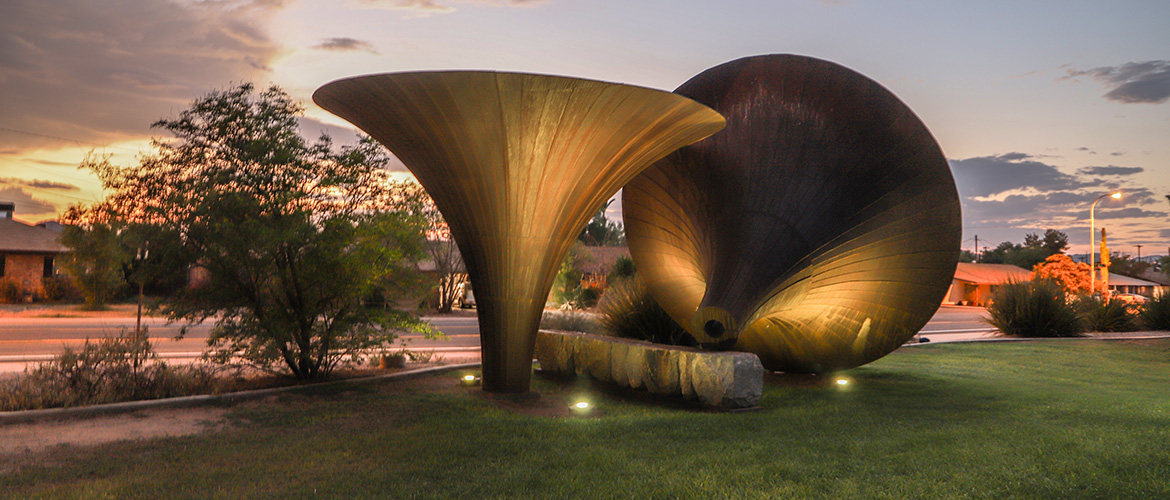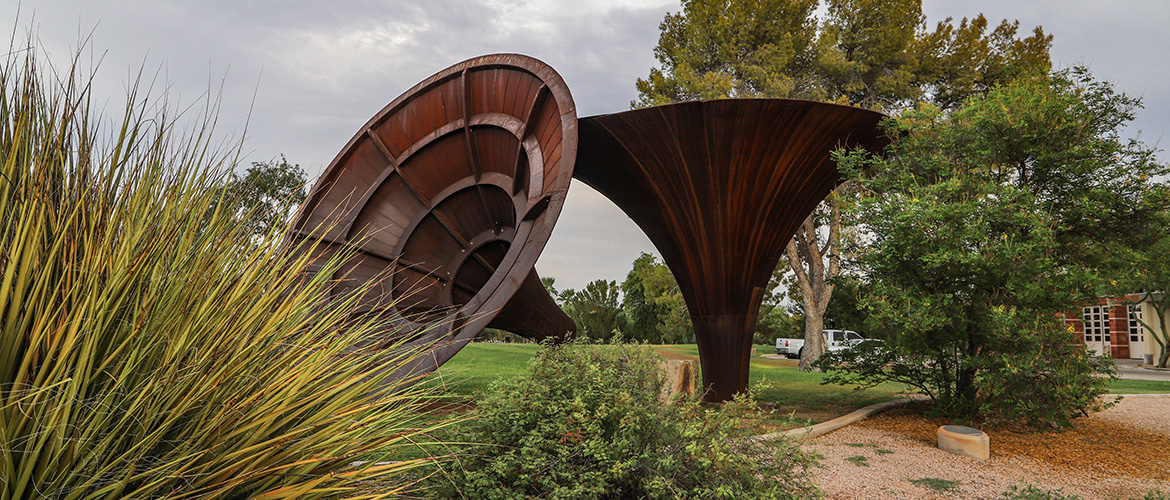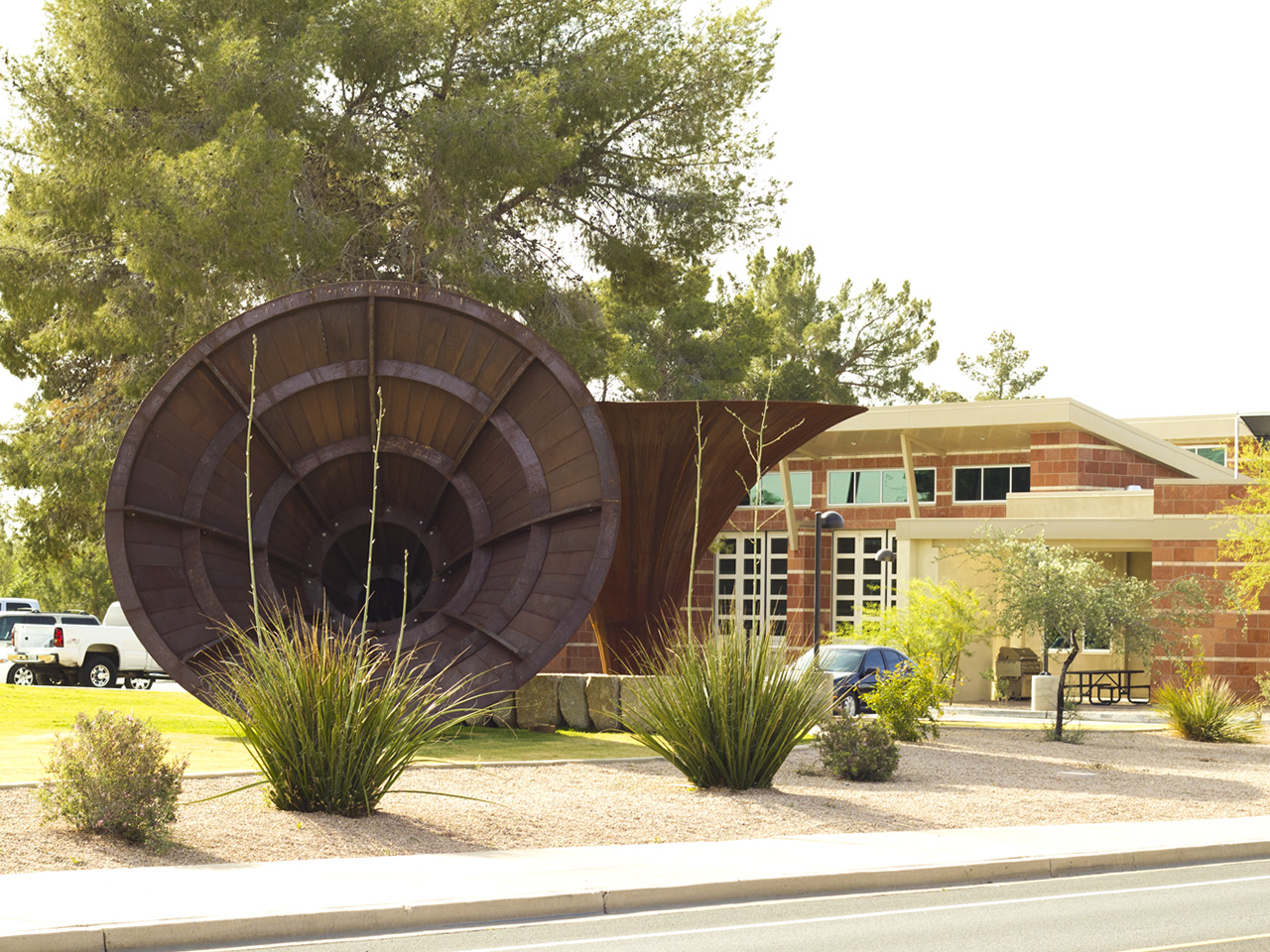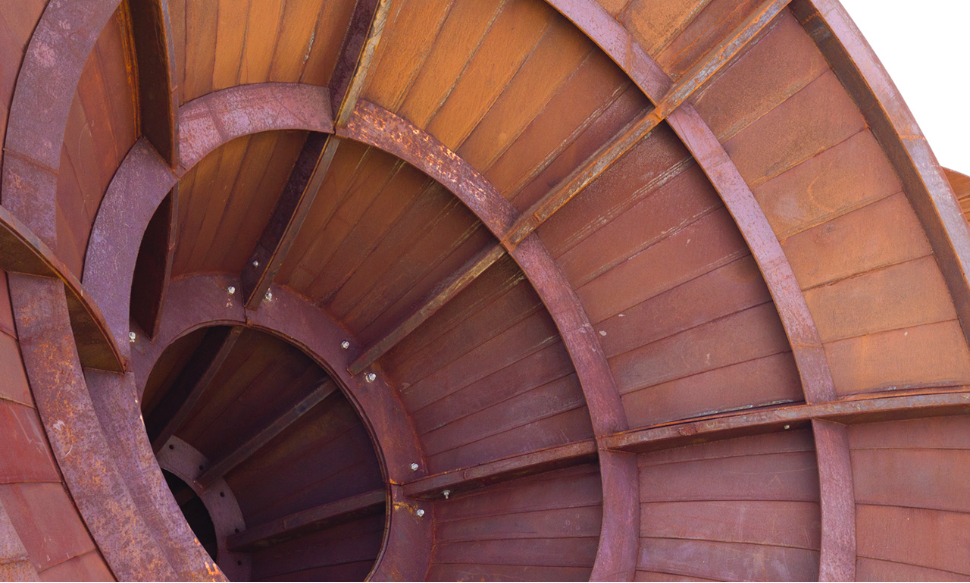





Ilan Averbuch
The Bell, The Flower and The Wash
Ilan Averbuch combined image and function, instilling layers and possibilities. To some it may become a landmark sculpture for Eldorado Park, to others an iconic form reminiscent of something not quite named, and to others a place to come, sit, and contemplate.
The artwork consists of free-standing elements made of Cor-ten steel and recycled stone, creating a sculptural environment—and a dialog with the site, close to the Fire Station and part of the park. The two large elements, shaped like large funnels or flowers and inspired by firefighter’s bells and trumpets, are positioned one upright, open to the sky, and the other resting on its side. The wide mouth of the resting funnel opens to pedestrians and motorists, and the narrow end is situated on top of a long line of massive stones. The stones are granite blocks cut flat at the top and tapered at the bottom. They lean on each other as if walking together in a team, connecting only at their upper part. The stones are wide enough at the top be a comfortable seating surface with shade oft provided by the shelter of the sculpture canopies.
Hidden beneath the ground is a pipe starting from the standing funnel, passing underground and through the first stone, and leading to the beginning of the trough. When rain falls, the wide mouth of the funnel will collect the water and direct it through the pipe, filling the trough. This line of water will connect the fragmented line of stones, unifying it into one body. When there is more water than the capacity of the trough, the water will overflow at the end. Some will pour into the grass, the remainder will evaporate in the strong Arizona sun.
Ilan Averbuch had built sculptures that create identities for many different kinds of places, from the Trail Blazers Basketball Arena in Portland, Oregon to a quiet and protected seating area in the center of the University of Connecticut. His most recent large-scale work announces one of the main entry points of the new light rail system in Phoenix, at the intersection of Camelback Road and Central Avenue. While acknowledging that in a public space, sculpture can be a guiding element, mark an entrance, direct attention, or aid circulation, it also communicates ideas and connects the viewer emotionally to the space.
project
details
Location1901 N Miller Rd, Scottsdale, AZ 85257, USA
ArtistIlan Averbuch
DatesCompleted 2011
